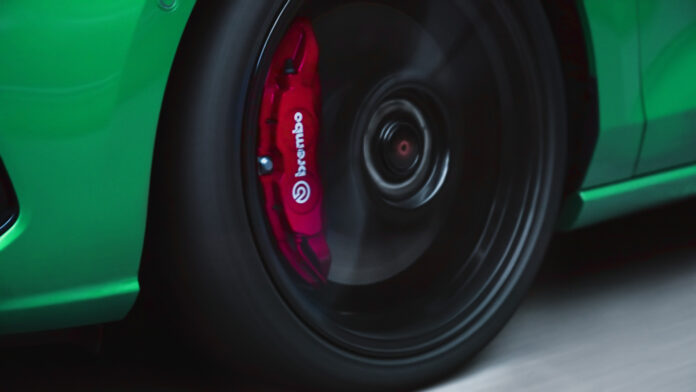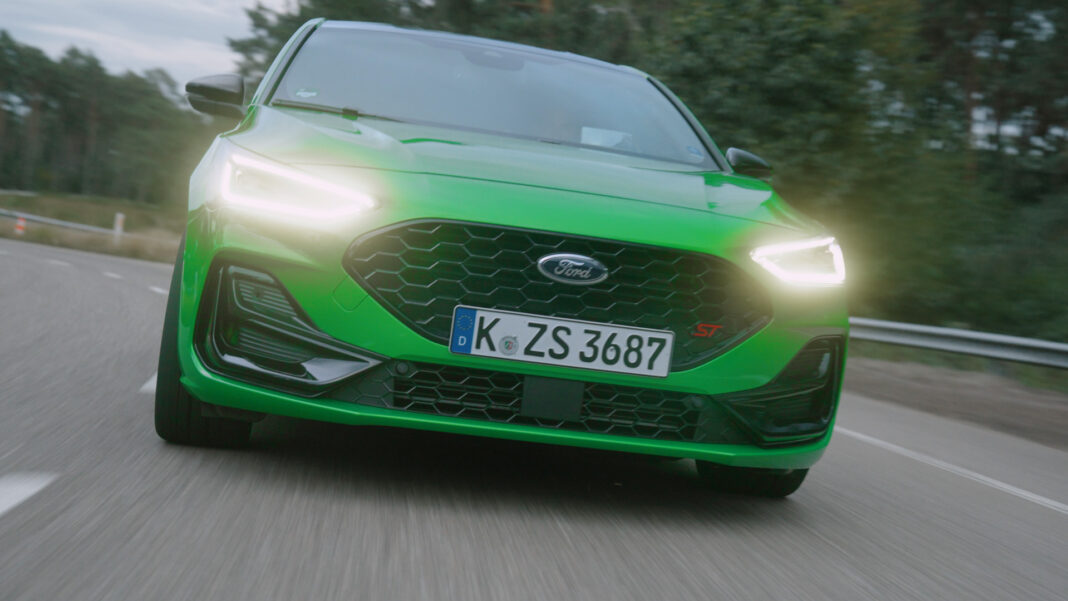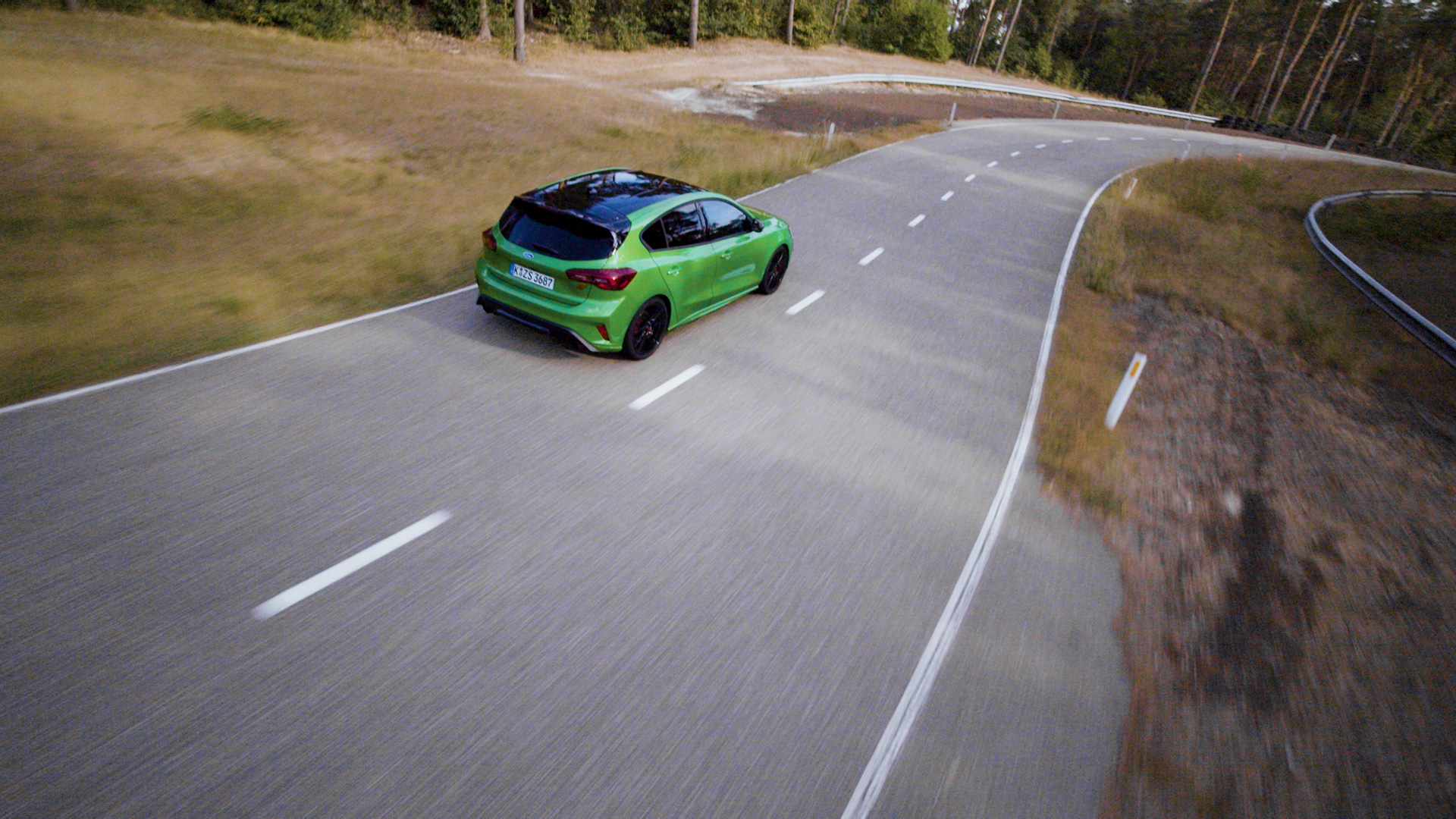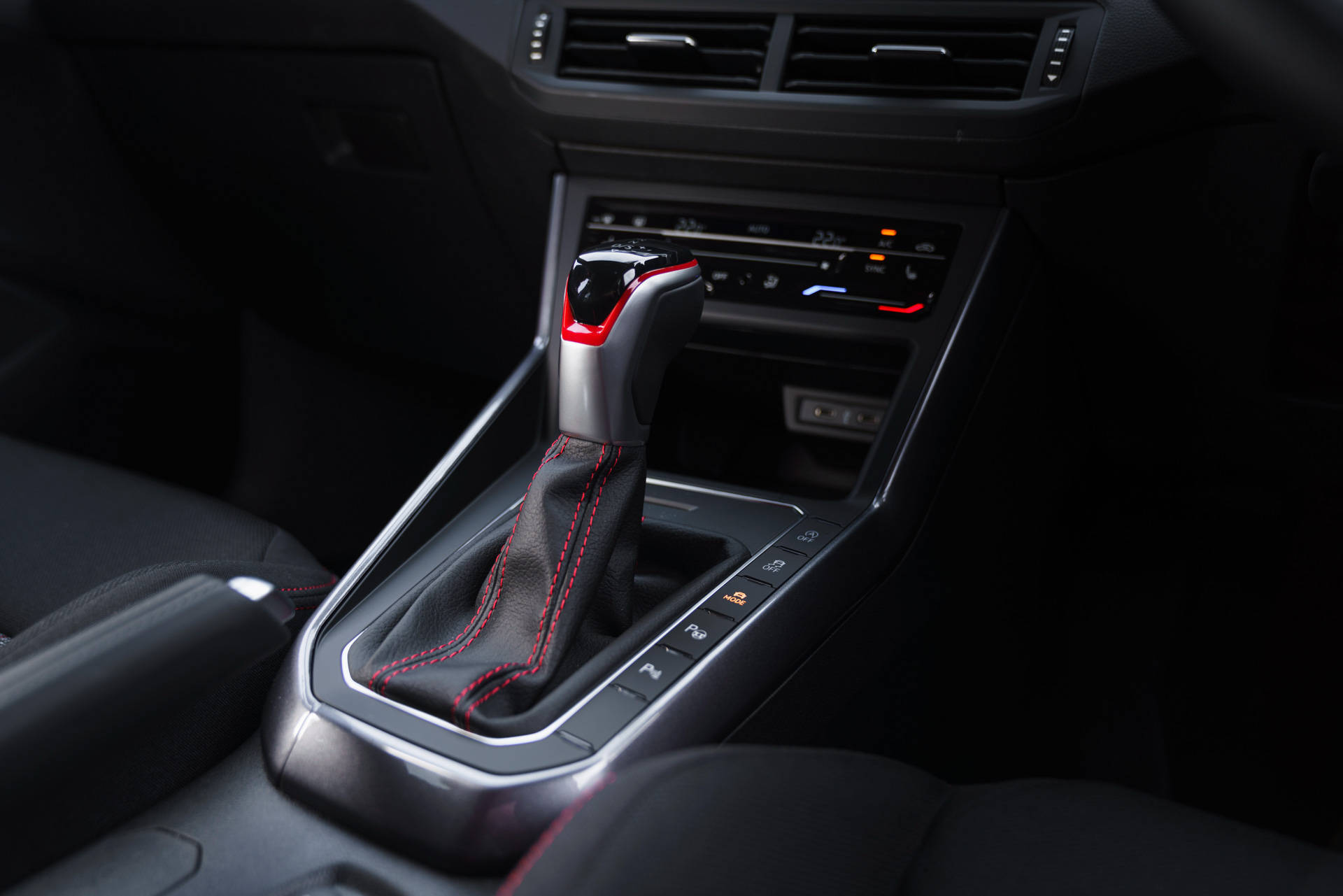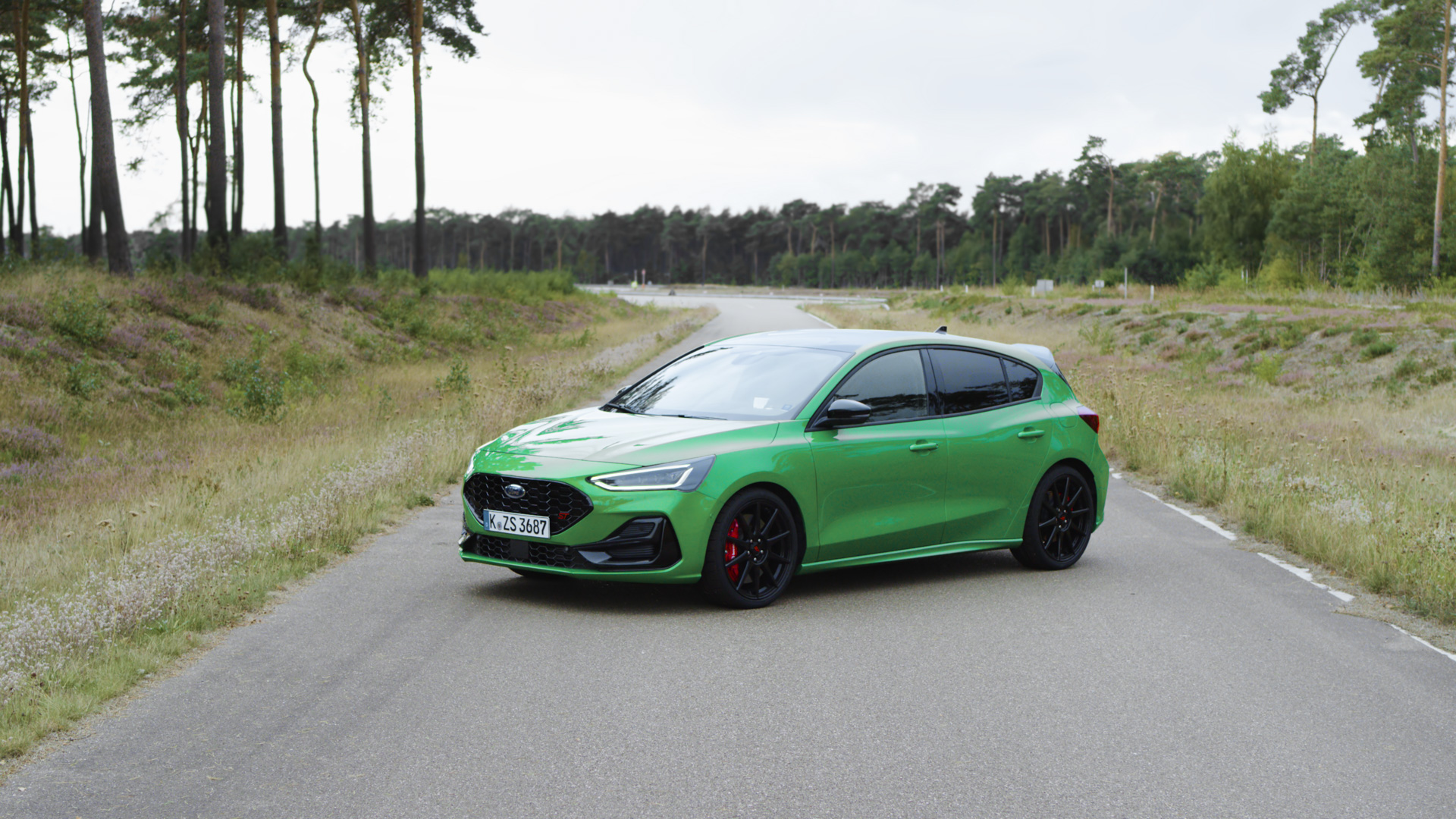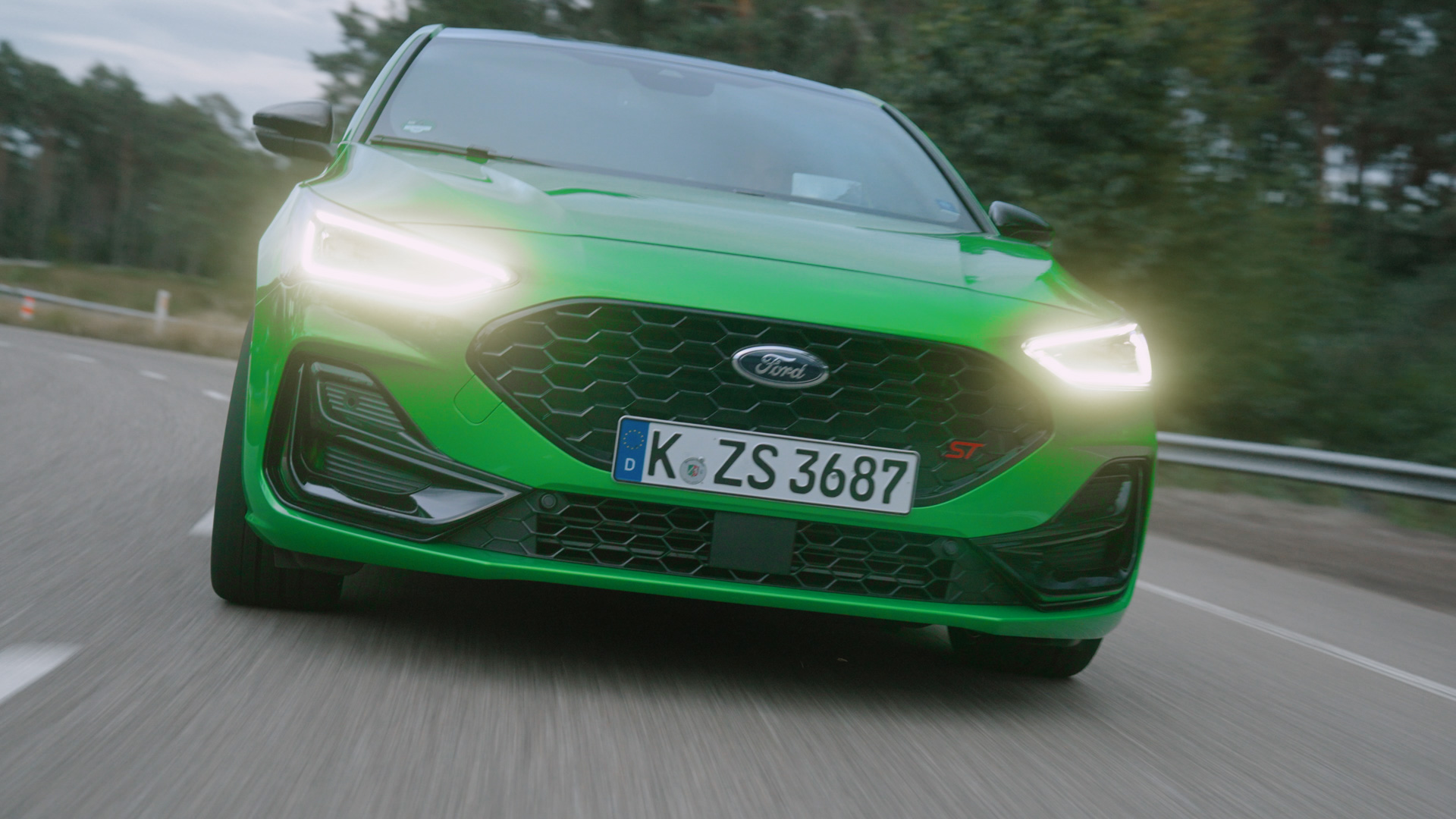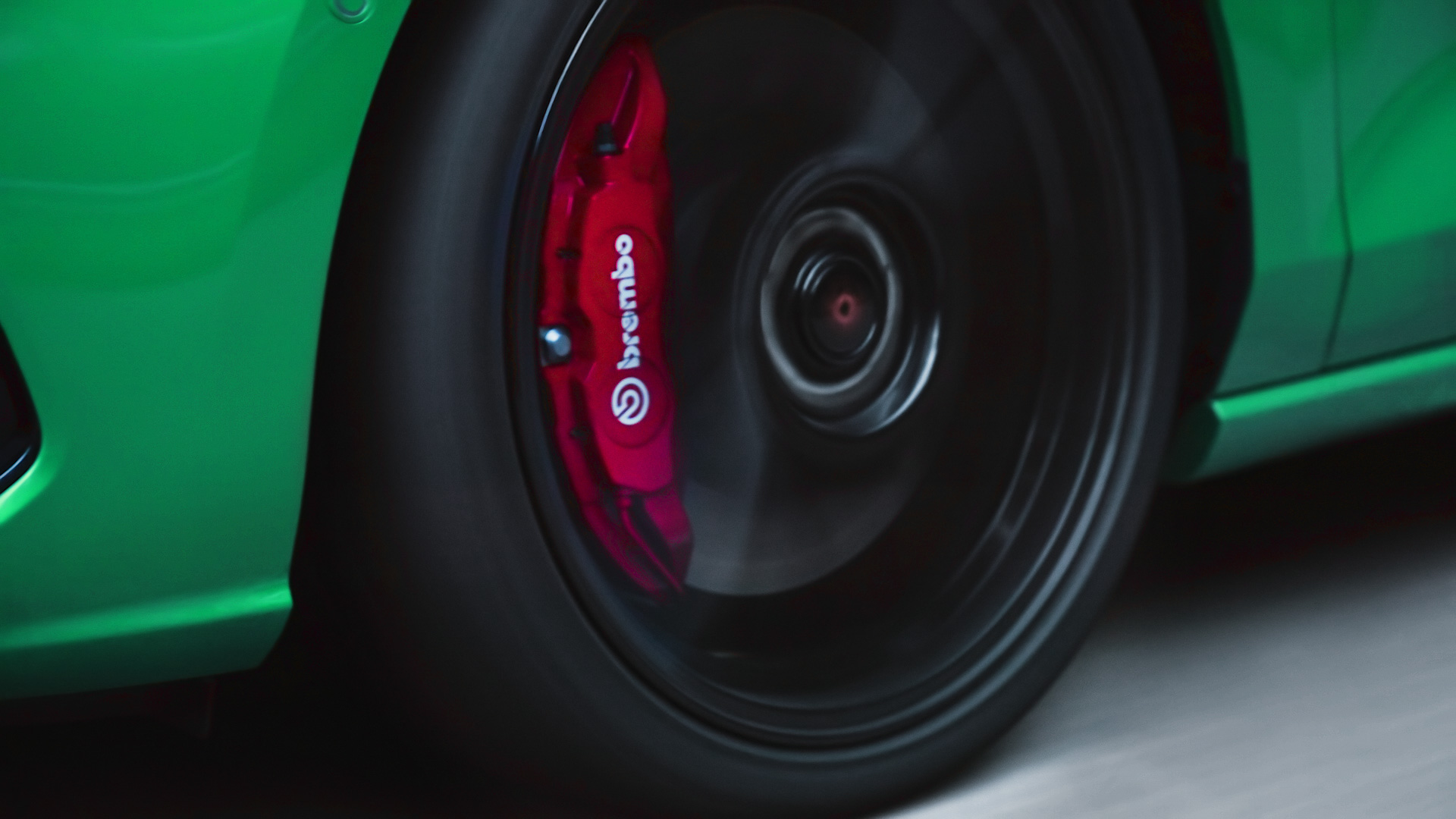The words “Fast Ford” can conjure a variety of opinions from the car enthusiast, both good and bad. You either think they’re the salt of the earth—a performance car for the common man—or a thug’s car for performing unimpressive stunts in your local McDonald’s car park.
It’s fair to say I could be accused of leaning toward the latter, being a fully paid-up member of the Golf GTI club. So perhaps the Ford Performance division can forgive me when I say that, at first glance, I was a little sceptical of this Focus ST, and particularly the suggestion of a “Track Pack”.
Anyone who has had a track car or taken their car on a track day will easily get sucked into the world of aftermarket upgrades. Wheels, tyres, brakes, and suspension are the parts most commonly swapped first. The issue is, 99% of us aren’t F1 engineers. We haven’t the foggiest idea what to buy and, more importantly, how to set it up. It’s a recurring theme on track day forums and social media groups, where people ask questions like, “Which coilovers are the best?” or “What should I do about tyre pressures?”. As you may have already gathered, the plethora of answers only compounds the confusion.
This brings us back to the Focus ST’s “Track Pack”. It appears that Ford has been keeping an eye on these groups because the contents of the £3,000 Track Pack read straight from the playbook: wheels, tyres, brakes, and suspension, all upgraded for circuit use. The vehicle sits on a set of 19-inch Ford Performance wheels shod in Pirelli P Zeros. Brembo has created a larger front brake setup, with 363mm discs and gargantuan calipers. And the suspension is a full-height, two-way damping adjustable coilover system developed by KW.
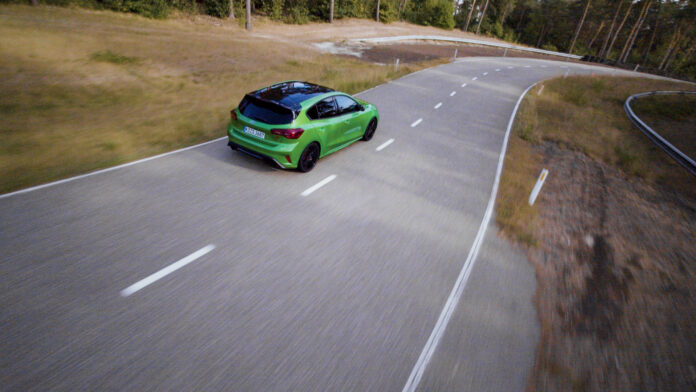
Blimey, it’s a serious bit of kit. And it only gets more impressive once you open the glove box—really! Because in there you’ll find the suspension tool kit, complete with Ford’s cheat sheet to really maximise all that adjustment. Not only does it help you set up the shock absorbers and ride height for different scenarios—such as road, bumpy road, GP track, Nürburgring, etc.—but it even lists optimal tyre pressures, both hot and cold, along with how to set them.
All very impressive, but this car isn’t an all-out track special, and history shows that tuning a car to such extreme lengths can ruin its day-to-day usability. Just ask anyone who’s fitted coilovers to their daily driver in pursuit of quicker lap times. If you want to spend £40,000 on a track car, you have other options; if you’re spending it on this, you’ll want it to be a jack-of-all-trades.
Jumping into the hot seat, initial impressions are favourable. The seats, the same ones found in the Puma ST and other performance Fords, provide comfort and support in a way few other OEM seats do. The driving position is good too, offering a broad range of adjustments, and the cabin feels notably spacious compared to some of its rivals. The centre of the dash is dominated by a 13.2-inch touchscreen, which, annoyingly, controls nearly everything. Thankfully, Ford has retained physical buttons elsewhere, including on the chunky (a tad too chunky, in my opinion) ST steering wheel. Some glimmers of common sense, like a physical button for parking that immediately prompts the navigation system to find you a nearby car park, are welcome. The cup holders’ seemingly endless adjustment and depth mean that spillage whilst hot-lapping Silverstone is finally a thing of the past.
The push-button start brings a rather angry-sounding 2.3 Ecoboost engine to life, accompanied by a flash of the ST logo on the all-digital dashboard and a notification confirming you have a seatbelt on, which you must clear to see the full display. That slight annoyance is easily forgiven, however. One thing Ford does better than any other brand is lane guidance. That’s not to say the system itself is stellar, but it remembers that you turned it off once and doesn’t require you to do so every time you start the car. Thank you!

Exiting onto my pothole-ridden village road, the Focus hints at its track roots with a marginally stiffer ride. Yet, it doesn’t sacrifice comfort. As the 30 mph limit gives way to a 60, accelerating allows the adjustable suspension to truly showcase its worth, keeping all four corners in contact with the road, even on the most quintessentially British of roads.
The Focus continues to impress. The power delivery is VW-level smooth, and while the engine’s sound might not be the most inspiring, the pops and crackles on the overrun amuse my inner child. But there’s nothing childish about its composure; the chassis displays incredible depth in its abilities. I will say, however, that I’m not a huge fan of the Pirellis it comes with. I suspect this particular set of P Zeros has been heat-cycled by many an excited journalist, so I won’t be too harsh. Yet, I sensed the tyres tapping out long before the Focus could display its full dynamic range.
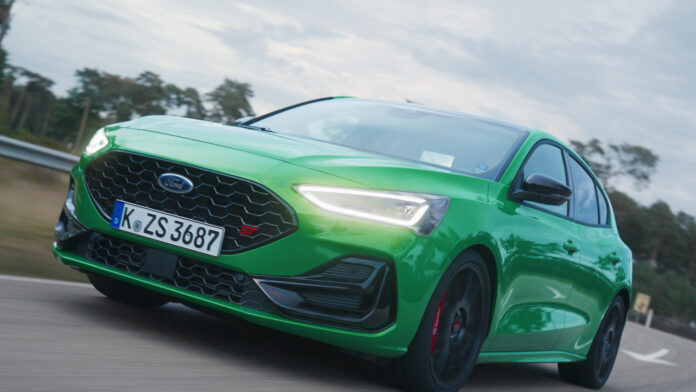
As hot hatches evolve into “hyper-hatches,” the added lap-time prowess can sometimes remove some of the fun. It’s a difficult balancing act for any manufacturer, as slower Nürburgring lap times could be perceived as negative press. However, the Track Pack manages to mature the car’s chassis without losing the fun factor. Mid-corner lift-off oversteer is aplenty, yet advanced damping and the LSD provide enough grip and composure to challenge cars well above its price point.
In conclusion, the “Fast Ford” mantra has always been about delivering extraordinary value in terms of performance, a genuine ‘power to the people’ ethos. As Ford and other manufacturers ramp up their EV production, one can’t help but wonder whether Fast Fords will ever be as compelling as this again. If this is indeed the last hurrah for the ICE-powered, everyman performance car, it’s a fitting swansong.
